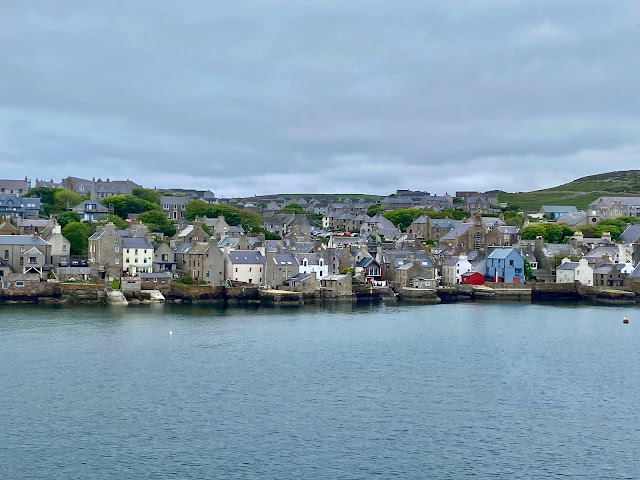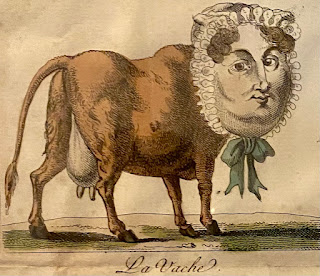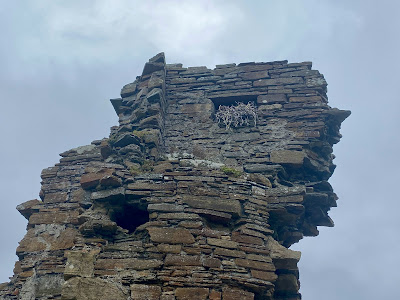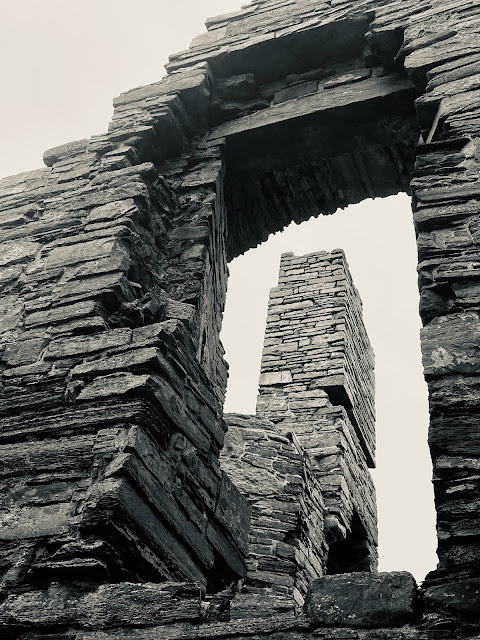Chris added the
Orkney Islands to our itinerary. It's a significant desination for competitive travelers.
Here he is as our car ferry pulled into
Stromness, about 90 minutes north of Thurso.
Airlines could learn something from ferry companies. Our passage could not have been more punctual or comfortable on a well-appointed ship with plenty of amenities. Although
Northlink (note the Viking logo) did chain their tables to the floor. Not all
Pentland Firth crossings are as smooth as ours was, in both directions.
I'd never seen a sign like this.
Raw weather enveloped Stromness, a port on the islands' "mainland" also known as Pomona.
Neither swimming nor biking held much appeal.
The
Ring of Brodgar was just up the road. You would need a drone to see that these stones, about 15 feet tall, are arranged in a perfect circle. There used to be 60 stones; only 29 have survived.

Truth be told, I found this
World War I graffiti more fascinating than any of the stones. It's much more relatable.
People lived in
Skara Brae from about 3180 BC to about 2500 BC. Buried underground for centuries, the village was eventually uncovered by a lashing storm in 1850. Another 70 years passed before archaeologists investigated; by that time, many of the artifacts had been looted.
You've got to wonder what the neighbors at
Skaill House, built in the 17th century, thought of all this ancient history. It's name is derived from the Norse word for hail which gives you an idea of the weather. Orcadians look to Scandinavia as much to Scotland for their ancestry and culture. By now, you must have begun to notice that Thom never wears the same outfit twice. He packed eight scarves!
The house's interior looks much as it did in the 1950s. No doubt there always have been more sheep on Orkney than people.

A slice and a nip would have gone down very well after our chilly exploration of the Neolithic sites.



This wood carving adorns a bureau rescued from a ship in the Spanish Armada.

That sounded far-fetched but no, check out the map.
The family gathered some spoils from hunting trips, too.


Believe it or not, this bathroom doesn't look a whole lot different from the one at 47 Pianos. But mine's turquoise.

I wonder if these tins were produced when Queen Elizabeth I was crowned? That would make them 70 years old.


The lady of the house confined herself to this room for more than three decades after her 14-year-old son fell from his horse to his death.


He's seen here, in another upstairs room. A trunk of his belongings from boarding school has been preserved. It certainly packs an emotional punch.

More fine craftsmanship although I wonder about the needlepoint in the context of the family tragedy.


Somebody in the house had a sense of humor. I enlarged these caricatures from panels that contained multiples. No gender stereotyping here!
St. Peter's Kirk, erected in the mid-nineteenth century, has been beautifully restored.





This wreath reminded me how much Armistice Day means in the UK.

Could that be clearing in the distance over Marwick Head?

Speaking of artifacts, here's an iconic one in Birsay, still operational for those with know-how, from the last century.

St. Magnus Church, just across the street, does double duty as a post office. Some of its windows have been bricked up.


Birds have pushed Orkney's first
Scottish earl out of his palace.
Robert Stewart, illegitimate son of James V, a Scottish king, and half brother of Mary, Queen of Scots, used to reside here.















































No comments:
Post a Comment